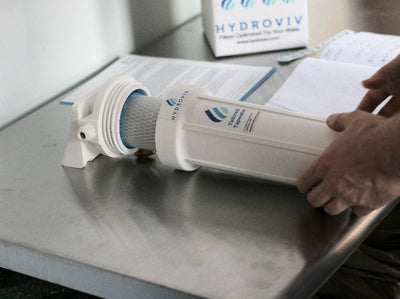Why Optimization Matters
Have you every traveled to a different city and noticed that the water tastes different? That’s because the water chemistry is different, and more importantly, the problems present in the water are different too.
Around the country, millions of U.S. households have contaminants in their water that exceed public health goals, but the individual contaminates vary significantly state by state and even zip code by zip code. The issues in your water can be impacted by a variety of factors including the age of your home and city’s infrastructure, the natural geology of the region, and your home’s proximity to industrial sites, farms and military bases. Cities with older infrastructure like Pittsburg, Pennsylvania, and Jackson, Mississippi, for example, face issues with lead contamination, while new developments in the American Southwest may be lead-free, but record unsafe concentrations of arsenic.
To address the unique issues in your water, our Water Nerds analyze water quality reports from local, county, state, federal and academic sources, and then build a customized filter designed to match and screen out the specific contaminates and bad-tasting chemicals coming out of your tap. The result is a hyper-targeted and long-lasting filter designed to keep your water safe and tasting great.
Here are a few examples of how water differs around the country:
- Lead: Lead contaminates tap water differently than most pollutants, because lead comes from the plumbing, not the water supply. Many neighborhoods in older cities have lead-containing service pipes that connect water mains to residential plumbing. Homes with pipes installed before 1986 often also have lead-containing solder. Lead can enter the water supply when municipal corrosion controls fail (what happened in Flint, Michigan) or when water sits stagnant in pipes for long periods of time. Lead contamination is a problem in all major U.S. cities, but there have been significant issues reported recently in Newark, Pittsburgh, Nashville and New York City. Many common pitcher filters do not remove lead.Learn more>
- Arsenic: Arsenic is a naturally occurring toxic heavy metal that leaches into groundwater from surrounding rocks. Areas of the country where arsenic levels are high include Maine, Texas and much of the Southwest. Most common pitchers and fridge filters do not remove arsenic. Learn more>
- Chromium-6: Chromium-6, the cancer-causing chemical at the center of the Erin Brockovich story, is still used in a number of industrial processes including steel production, leather tanning, and textile manufacturing. It can enter local rivers and groundwater through waste, and despite notable media attention is still not well regulated. Homes located near current or former industrial facilities are most at risk. Learn more>
Chlorine vs. Chloramine:
Most municipalities around the country use chorine to disinfect their local water supply, but some, including our hometown of Washington, D.C., use chloramine. While both are safe at the levels used, neither taste very good. Most common filters are designed to remove only chlorine, but Hydroviv’s system is tailored to match whichever is used in your hometown, giving you the best-tasting results. Learn more>Learn more about our and get the best solution for your water.










